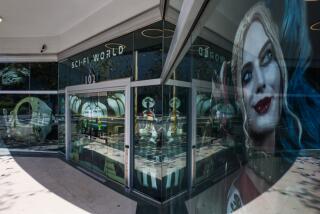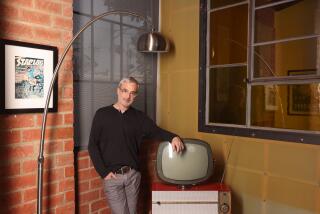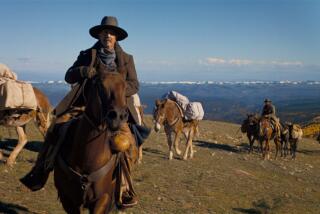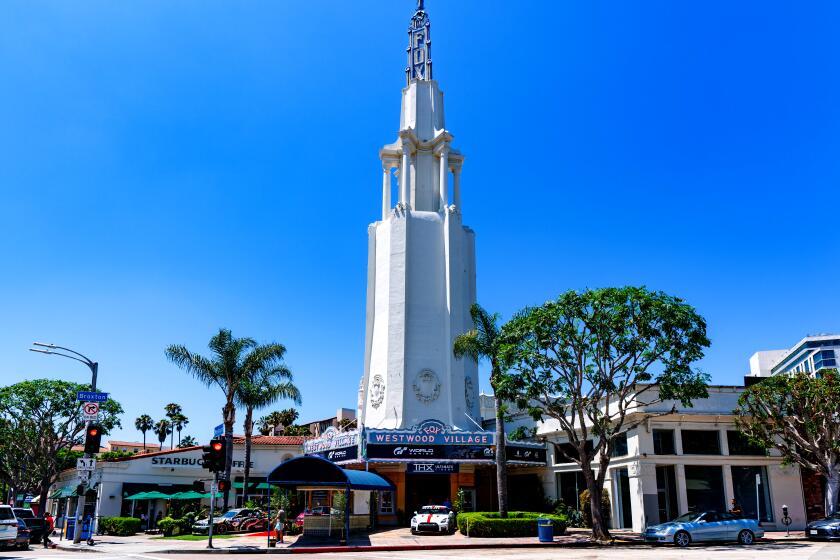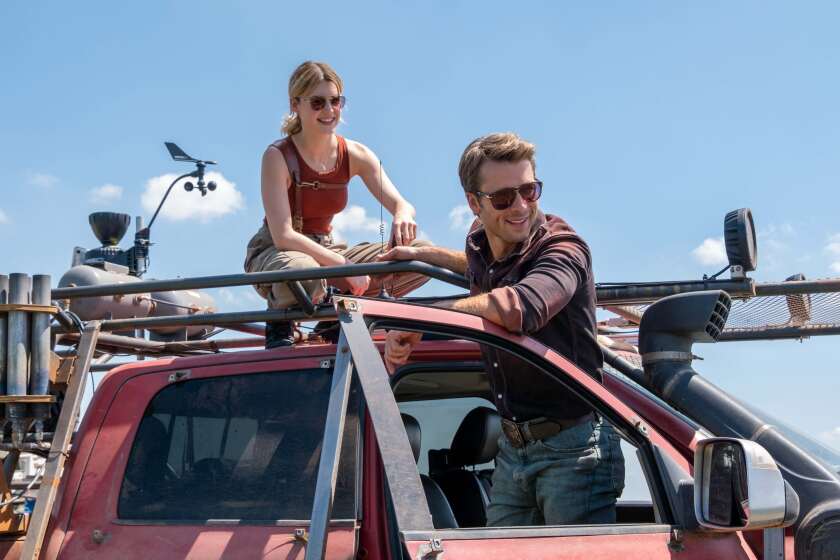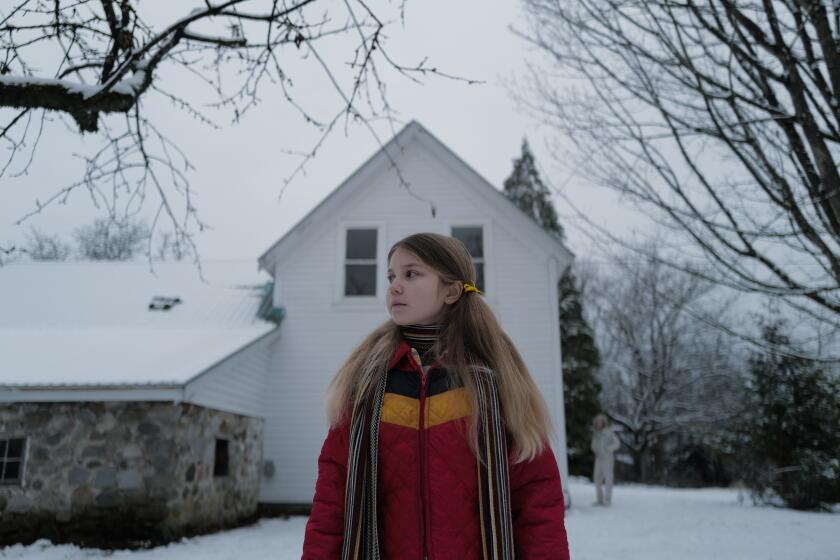From the Archives: Go for a ride on the starship Enterprise in ‘Star Trek: The Motion Picture’
“Star Trek: The Motion Picture” is not so much a film as a phenomenon: a space family reunion, fan club meeting and Thanksgiving Day parade under the same spacious roof.
If ever a film was willed into being by the people who wanted to see it, this is it. The Trekkies were in line before dawn, some of them, for the Friday citywide openings. At the Chinese the doors opened an hour before showtime and the seats and the popcorn lines were full within moments.
It’s the only non-trade screening I can remember when the producer’s name — Gene Roddenberry — drew a rousing ovation during the opening credits. Ray Stark, eat your heart out.
The audiences, this early at least, are part of the film. The Trekkies sounded pleased to the point of delirium with what they saw. They cheered the first glimpse of each of the eight familiar faces (with lesser cheers, out of courtesy , for the two new faces).
Leonard Nimoy as Mr. Spock has been given an entrance unequaled for showmanship since Carol Channing sashayed down those stairs in “Hello, Dolly!” and it drew a great roar. The pleasure of a comedy is the contagion of the laughter and, Trekkie or not, the pleasure of “Star Trek: The Motion Picture” is the contagion of delight of old friends reunited, which is to say, of William Shatner as Capt. Kirk, Nimoy, DeForest Kelley as Dr. “Bones” McCoy, James Doohan as Scotty, et al, once again in the presence of their admirers.
Considered on its own, as a film without antecedents (which is, of course, all but impossible), “Star Trek: The Motion Picture” is slightly another matter.
It is hugely scaled (the title “Spockalypse Now popped into my dazed mind).
The new starship Enterprise is reported in the production notes to be 947 feet by 417 feet, with a crew of 431 and a speed 218 times as fast as light. No EPA estimates are given.
The special effects created by Douglas Trumbull and John Dykstra are as spectacular as one would expect them to be. One sequence especially, in which (as nearly as I could figure out) the Enterprise careens into a time warp with one of its spark plugs misfiring and threatens to vibrate to pieces, is a wonderful mic of faces gone rubbery and blurry as through a wet windshield and voices gone low and hollow as on a failing tape recorder.
Individual bodies chug-chug in space, small space ships nurse up to mother and a sense of size is so convincingly established that the real Golden Gate Bridge, briefly seen, look like a miniature.
But, despite the crackling electricity (the effects are very lightning-oriented), the visuals more often than not are majestically, terminally slow, better at conveying size than speed. There are a couple of dazzling burps, when the ship blasts through the time warp (a postgraduate sound barrier), but most of the time the approaches, dockings and flybys are so leisurely there is some danger to the pilot will doze off at the stick.
There is virtually none of the slam-bang action and excitement of “Star Wars.” The script by Harold Livingston from a story by Alan Dean Foster attempts a parable in which Deep Space and Future Time offer more promise than peril and in which misunderstanding rather than villainy is the problem. In this, “Star Trek” is closer to “Space Odyssey” and “Close Encounters,” though without Kubrick’s special mix of high energy and mysticism or Spielberg’s lively confrontation of Earth and Other.
The plot is that a mysterious cloud of unthinkable size and destructive energy is zipping toward Earth and only you, starship Enterprise, may be able to stop it.
(What it proves to be will not be explained here, even if I could, but there is one faint echo of “Zardoz.”)
Shatner as Kirk comes out of retirement for the fateful mission, dislodging as commander young Stephen Collins, who has overseen the new Enterprise. The rivalry is not really developed.
Persis Khambatta, she of the shaved head, plays an old flame from Collins’ tour of duty on Planet Delta and looks every inch an Egyptian princess. She and Collins, both attractive players, carry the film’s parable , looking to some higher evolution in which mates may make circuits and alloys instead of babies but still live happily ever after.
For the rest of it — to the satisfaction of the devotees — Spock is pretty much his old haughty emotionless and invaluable self, Kirk the heroic but human leader, the doctor the grousing and skeptical voice of Earth, Scott the lovable, dependable character.
The rest of the old gang, George Takei as Sulu, Majel Barrett as Dr. Chapel (elevated from Nurse), Walter Koenig as Chekov and Nichelle Nichols as Uhura, are on hand to wave from the back of the convertible, so to speak.
It is, beyond doubt, a phenomenon and an attractive one in that it reflects a kind of double idealism: good fictional people in quest of whatever may be best about tomorrow, with enthusiastic audiences, able to be optimistic about tomorrow if not today, going along for the ride.
But the hard fact is that a lot of “Star Trek” is sluggish going, and would seem slacker without Jerry Goldsmith’s bold, resourceful and hard-working music, which does everything music can to create feelings of exuberance and alarm.
The director was the meticulous Robert Wise, and the polish of “Star Trek” cannot be faulted. But the troubles surrounding the film have been widely reported: early effects discarded, others abandoned for want of time before the inexorable premiere date. It may be that the stirring action the film seems to lack is on the drawing boards, not the cutting room floor.
Buf what you see is what you respond to, and what you see is a unique cultural phenomenon, and a film that for all its visual splendors falls well short of its aspirations. You don’t have to be Trekkie to love it, but it would certainly help.
More to Read
Only good movies
Get the Indie Focus newsletter, Mark Olsen's weekly guide to the world of cinema.
You may occasionally receive promotional content from the Los Angeles Times.
